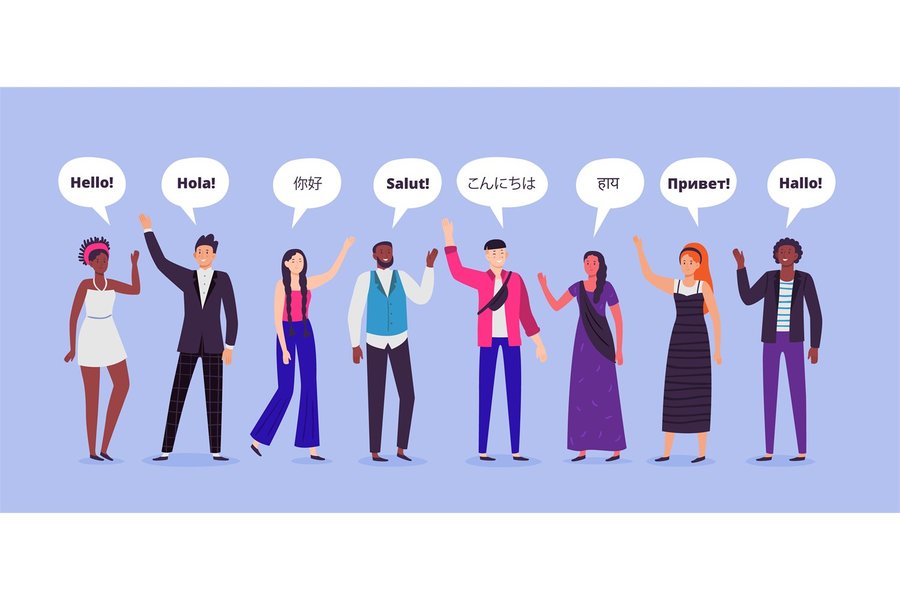
Exploring the Many Facets of "Hi There" and Online Connection
A Deep Dive into Greetings, Communication, and Digital Communities
Greetings are fundamental to human interaction, serving as the initial bridge for connection. The simple phrase "Hi there" is a common and versatile greeting used across various contexts, both online and offline. This response explores the significance of such greetings, delves into different ways to say "hi," and examines the landscape of online communities where these interactions frequently occur.
Essential Insights into Digital Greetings and Communities
- "Hi there" is a versatile and friendly greeting, suitable for initiating conversations in both casual and slightly more formal online settings.
- Online communities offer diverse platforms for connection, ranging from social media groups and forums to dedicated platforms built for specific interests and professional networking.
- Effective online communication involves more than just a greeting, requiring context, clear intent, and engagement with the community's norms.
The Simple Power of a Greeting
The act of saying "hi" or "hello" is a universal way to acknowledge someone's presence and signal a willingness to communicate. While seemingly small, this initial contact sets the tone for the interaction that follows. In the digital realm, where non-verbal cues are often absent, a well-chosen greeting becomes even more significant in conveying friendliness and approachability.
More Than Just "Hi": Variations and Nuances
Beyond the basic "hi," the English language offers a rich variety of greetings, each carrying slightly different connotations. The choice of greeting can depend on the relationship between the speakers, the context of the interaction, and the desired level of formality.
Casual Greetings
For informal settings, such as texting friends or engaging in casual online chats, greetings like "Hey," "What's up?", "Sup," or "How's it going?" are common. These greetings are relaxed and often used to initiate a conversation without a specific agenda.
Slightly More Formal or Polite Greetings
Phrases like "Hello," "Good morning," "Good afternoon," or "Good evening" are generally considered more polite and can be used in a wider range of situations, including initial contact in online forums or professional networking platforms. "Hi there," as used in your query, falls into this category – friendly but not overly casual.

Using a greeting that matches the context of the online community is important for making a good first impression. Just as you wouldn't use overly casual slang in a professional email, you should adapt your greeting style to the norms of the platform or group you are engaging with.
Navigating the Landscape of Online Communities
The internet has created a vast ecosystem of online communities, bringing together people with shared interests, hobbies, professions, or goals. These communities provide spaces for discussion, support, learning, and connection. Understanding the different types of online communities and how to engage within them is crucial for a positive experience.

Types of Online Communities
Online communities can take many forms, each with its own structure and purpose. Some common types include:
- Forums and Discussion Boards: Platforms like Reddit host countless forums (subreddits) dedicated to specific topics, allowing users to post questions, share information, and engage in threaded discussions. Communities like r/stopdrinking are highlighted for their welcoming and supportive atmosphere.
- Social Media Groups: Platforms like Facebook allow users to create and join groups centered around shared interests, providing a space for informal communication and content sharing.
- Interest-Based Platforms: Websites and apps designed for specific hobbies or interests, such as gaming communities on Discord, creative communities on platforms like DeviantArt, or reading communities on Goodreads.
- Professional Networks: Platforms like LinkedIn facilitate connections and discussions among professionals in various industries.
- Customer Support Communities: Many companies host online communities where customers can ask questions, find solutions, and interact with other users and support staff, such as the communities provided by HP and Visa.
- Learning Communities: Platforms associated with online courses or educational institutions that allow students to interact with each other and instructors.
- Membership Platforms: Dedicated platforms like Circle, Mighty Networks, and Skool are designed for creators and organizations to build and manage their own online communities, often offering features like courses, events, and member directories.
Finding Welcoming Online Spaces
Finding a friendly and welcoming online community often depends on aligning your interests with the group's focus and engaging respectfully. Communities thrive on participation and mutual support. When joining a new community, taking the time to observe the existing interactions and understand the community's norms can help you integrate smoothly.
Actively participating in discussions, offering helpful insights, and responding thoughtfully to others are all ways to become a valued member of an online community. While a simple "hi there" can initiate contact, sustained engagement is key to building relationships and feeling a sense of belonging.
Crafting Effective Online Interactions
Beyond the initial greeting, effective communication in online communities involves several elements. Being clear, concise, and relevant to the ongoing discussion is important. Understanding the purpose of the community and tailoring your contributions accordingly can significantly improve your interactions.

Tips for Engaging Online
- Read the Room: Before posting, take some time to read existing discussions to understand the community's tone, common topics, and established rules or guidelines.
- Provide Context: When asking a question or sharing information, provide sufficient background to help others understand your contribution.
- Be Respectful: Even in disagreements, maintain a respectful and courteous tone. Avoid personal attacks or inflammatory language.
- Offer Value: Contribute to the community by sharing your knowledge, experiences, or insights relevant to the group's focus.
- Respond Thoughtfully: When replying to others, address their points directly and engage in constructive dialogue.
- Avoid "Just Saying Hi": In many online communication platforms, especially in professional or technical contexts, simply saying "hi" without immediately following up with your query or purpose can be inefficient. It's often better to include your question or the reason for your message in the initial contact.
The concept of "no hello" in certain online communication etiquette suggests getting straight to the point after a brief greeting, respecting others' time and facilitating quicker responses.

Platforms for Building and Joining Communities
The growth of online communities has led to the development of various platforms designed to facilitate their creation and management. These platforms offer tools for discussions, content sharing, events, and member organization.
| Platform | Key Features | Ideal For |
|---|---|---|
| Circle | Posts, chats, live events, courses, gamification | Creators and businesses building engaged communities |
| Mighty Networks | Community building tools, courses, events, mobile apps | Building branded communities with integrated content |
| Skool | Gamification, courses, community features | Communities focused on learning and achievement |
| Discord | Voice, video, and text chat channels, bots, integrations | Gaming communities, social groups, casual meetups |
| Slack | Channel-based messaging, integrations | Team communication, can be adapted for communities |
| Thinkific | Online courses, community features | Educators and creators selling courses with community support |
These platforms provide varying levels of functionality and are suited for different types of communities, from small, niche groups to large-scale networks.
Greeting Cards and Digital Expressions of Connection
While online communities facilitate ongoing interaction, digital greeting cards offer a specific way to send a personalized message for occasions or simply to say "hi" to someone individually. These ecards have become a popular way to stay in touch and celebrate events.
The Evolution of Greeting Cards
From traditional paper cards to animated and interactive digital versions, the way we send greetings has evolved. Online platforms now offer a wide array of options for creating and sending personalized messages.
This video discusses how websites offer digital greeting cards that can be personalized, demonstrating the modern approach to sending greetings.
Popular Ecard Platforms
Numerous websites specialize in providing digital greeting card services, offering templates, customization options, and delivery features.
-
123Greetings: Offers a vast collection of free ecards for various occasions and everyday greetings.
-
Blue Mountain: Provides both free and premium ecards, including animated and talking cards.
-
American Greetings: Offers a wide selection of digital cards, including their interactive SmashUps and customizable Creatacards.
-
Greetings Island: Allows users to create and customize cards for printing or sending online.
-
Canva: A design platform with templates for creating personalized greeting cards.
-
GroupGreeting: Specializes in creating online group cards where multiple people can sign.
-
Paperless Post: Offers stylish online invitations and greeting cards.

These platforms make it easy to send a personalized "hi" or a more elaborate message for any occasion, bridging geographical distances and allowing for creative expression.
Frequently Asked Questions
What is the best way to say "hi" in an online community?
The best way to say "hi" in an online community depends on the specific community's culture and context. In a casual setting, a simple "Hey everyone!" or "Hi!" might suffice. In a more formal or focused community, it's often better to combine your greeting with your purpose for posting, such as "Hello, I have a question about..." or "Hi, I wanted to share some information about...". Observing how others initiate conversations in the community is a good approach.
How can I find a friendly online community?
To find a friendly online community, start by identifying your interests or needs. Search for communities related to those topics on platforms like Reddit, Facebook Groups, or dedicated interest-based websites. Once you find a potential community, spend some time observing the interactions before actively participating. Look for communities where members are supportive, respectful, and engaging. Don't be afraid to try out a few different communities until you find one that feels like a good fit.
Is it okay to just say "hi" in a direct message?
In a direct message, especially if it's to someone you don't know well or in a professional context, it's generally more effective to follow your greeting with the reason for your message. Simply saying "hi" can put the other person in a position where they have to prompt you for more information, which can be inefficient. Including your purpose upfront respects their time and facilitates a more direct conversation.
What are some alternatives to saying "hi"?
There are many alternatives to saying "hi," depending on the context and desired tone. Casual alternatives include "Hey," "What's up?", "How's it going?", or even a wave emoji in text. More formal alternatives include "Hello," "Good morning/afternoon/evening," or "Greetings." In online communities, you might also use phrases like "Hello everyone" or "Hi team."
References
Last updated April 22, 2025